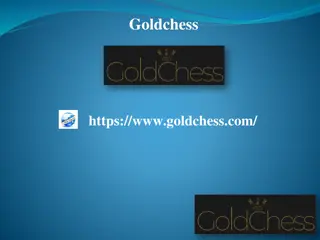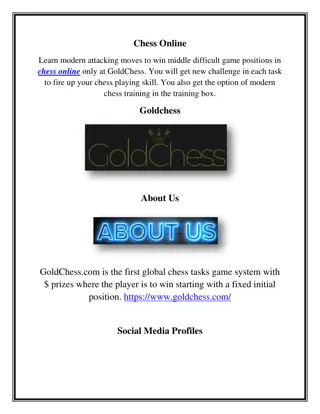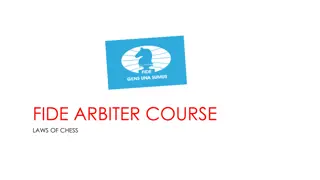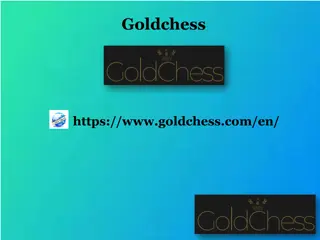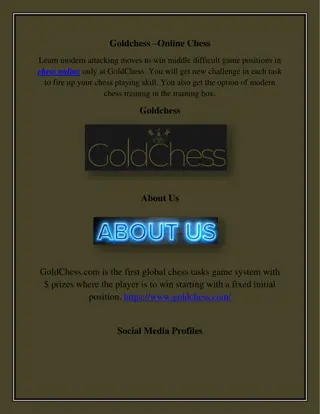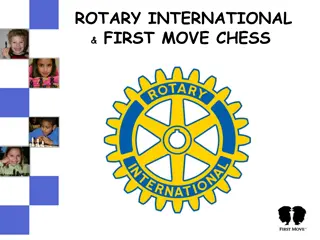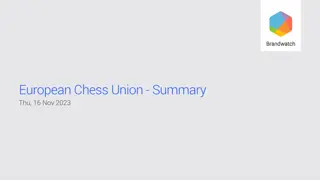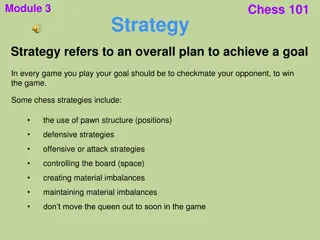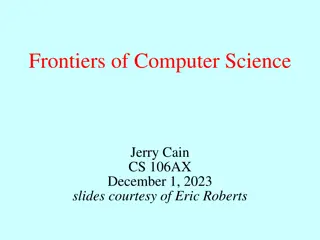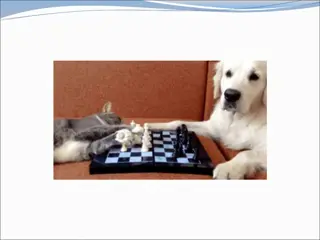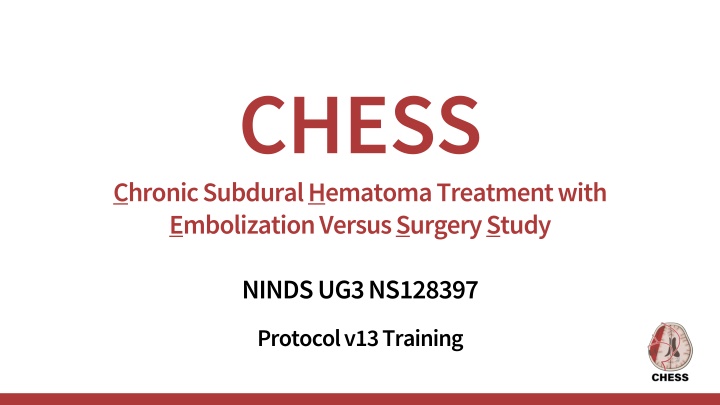
Comparing Embolization and Surgery for Chronic Subdural Hematoma
This study compares the effectiveness of embolization versus surgery in treating Chronic Subdural Hematoma (CSDH) through a prospective, randomized, open-label approach. The trial involves 394 participants aged 40-90 years with specific eligibility criteria, aiming to assess primary and safety endpoints over 180 days post-randomization. The study is led by a team of expert investigators and aims to provide valuable insights into the optimal treatment approach for CSDH.
Uploaded on | 2 Views
Download Presentation

Please find below an Image/Link to download the presentation.
The content on the website is provided AS IS for your information and personal use only. It may not be sold, licensed, or shared on other websites without obtaining consent from the author. If you encounter any issues during the download, it is possible that the publisher has removed the file from their server.
You are allowed to download the files provided on this website for personal or commercial use, subject to the condition that they are used lawfully. All files are the property of their respective owners.
The content on the website is provided AS IS for your information and personal use only. It may not be sold, licensed, or shared on other websites without obtaining consent from the author.
E N D
Presentation Transcript
CHESS Chronic Subdural Hematoma Treatment with Embolization Versus Surgery Study NINDS UG3 NS128397 Protocol v13 Training
Principal Investigators Key Study Team Members Magdy Selim, MD Neurologist, Steering Committee Adnan Qureshi, MD Chair of Steering Committee Renee Martin, PhD Blinded Statistician Suzan Moser FDA Regulatory Affairs Jessica Spahn Project Manager Ibrahim Bhatti, MD Clinical Review Committee Manager Muhammad Shakir, MD Clinical Imaging Laboratory Manager Riley Luckmann Data Manager Emily Philpot Data Manager Peter Kan, MD Contact PI Ajith Thomas, MD Co-PI Christy Cassarly, PhD Co-PI Unblinded Statistician Farhan Siddiq, MD Co-PI
Prospective, randomized, open-label Moderately symptomatic CSDH 1:1 randomization MMAE or surgery Sample Size: 394 Time in Study: 180 (+30) days Clinical Centers: 30-35 US sites in Projected Timeline Start-up: 9 Months Enrollment/Follow-up: 3.75 years Close Out: 6 Months Trial Design
Key Eligibility Criteria Inclusion Age 40-90 years Unilateral convexity CSDH ( 10 mm thickness), OR Bilateral CSDH if only one side is considered for treatment and the contralateral side is <5 mm CSDH at least 2/3 isodense or hypodense Qualifying baseline head CT performed within the 7 days prior to randomization Able to undergo assigned treatment within 48 hours after randomization Exclusion Known contraindications to angiography Known collateral vessel pathways potentially endangering normal territories or cranial nerves Known large diameter arteriovenous shunt that cannot be addressed with coil embolization No measurable deficit TUG, ASR, or MRC
Primary Endpoint The proportion of subjects (per the Clinical Review Committee) to need rescue surgery or die within 180 days of randomization
Safety Endpoints 1. The proportion of subjects with symptomatic ischemic stroke within 180 days of randomization. 2. The proportion of subjects with serious/life threatening adverse events within 180 days of randomization. 3. The proportion of subjects with worsening of neurological status or development of new disabling neurological symptoms (>1 point on the Markwalder Scale) anytime within 180 days of randomization. 4. The proportion of subjects with seizures within 180 days of randomization. 5. The proportion of subjects with cranial neuropathy within 180 days of randomization.
Exploratory Endpoints 1. Proportion of subjects with volumetric reduction of 50% on CT imaging at 90 days post-randomization. 2. Change in quality of life from baseline to 180 days post-randomization (assessed using the EQ-5D-5L). 3. Change in cognitive outcome from baseline to 180 days post- randomization (assessed using t-MoCA). 4. Change in headache severity assessed from baseline to 180 days post- randomization (using HIT-6). 5. The proportion of subjects with favorable functional outcome defined as an improvement in mRS at 180 days post-randomization compared with baseline. If baseline mRS is 0, favorable outcome is mRS of 0.
Timeline for Assessments 48 hours After Randomized ( 24 hours) 0 7 days After 30 days After Randomized ( 7 days) 180 days After Randomized (+30 days) 90 DAYS after Randomized ( 14 days) Rescue Surgery Assessment Study event Baseline Randomization Randomized or at Discharge1 _ _ _ _ _ _ _ Informed Consent Study Treatment (Surgery or MMAE) _ _ _ _ _ _ _ Lab Work/Imaging _ Pregnancy Test (Women) Platelet count _ _ _ _ _ _ _ _ _ _ _ _ _ _ _ _ _ _ _ _ Coagulation Profile _ _ _ _ _ _ Serum Creatinine CT Scan of Head Without Contrast 5 2 5 5 _ _ _ Clinical History Assessment Medical History, Demographics Medications _ _ _ _ _ _ _ _ _ _ SAE Monitoring 4 4 _ _ AE Monitoring
Timeline for Assessments 48 hours After Randomized ( 24 hours) 0 7 days After 30 days After Randomized ( 7 days) 180 days After Randomized (+30 days) 90 DAYS after Randomized ( 14 days) Rescue Surgery Assessment Study event Baseline Randomization Randomized or at Discharge1 Clinical Assessments _ _ Markwalder Scale 5 5 5 _ MRC 3 _ _ _ _ _ _ mRS (RFA) 3 _ _ _ _ _ _ _ Pre-cSDH mRS _ _ _ _ _ _ EQ-5D-5L _ _ _ _ _ _ t-MOCA _ _ _ _ _ _ HIT-6 5 5 5 _ _ _ _ TUG 5 5 5 _ _ _ _ ASR
Screening for Potential Subjects All consecutive CSDH subjects admitted are expected to be reviewed by study team (within 24 hr of admission) for eligibility Pre-Consent Screening Post-Consent Screening Post-Consent Additional Baseline Demographics Medical History Review of Medications General Physical Exam Vital Signs Neurological Examination Head CT (Viz RECRUIT) Lab Work Markwalder Scale MRC TUG ASR mRS/Rankin Focused Assessment EQ-5D T-MOCA HIT-6 Screen failures for patients meeting radiographic criteria but otherwise are ineligible for CHESS must be documented
Randomization can occur: Once informed consent is obtained All inclusion criteria and no exclusion criteria are met WebDCU will randomly assign treatment Must undergo assigned treatment within 48hr Once a subject is randomized, they are considered enrolled in the study Randomization
Recruitment Goals # of Subjects Minimum Per Site Per Year Across 4 Years Consent 4-5 ~520 Randomize 3-4 ~394
Antiplatelets and OACs withheld for the first 7 days after randomization After 7 days they may be restarted at the discretion of the local investigator if the CT scan is stable or better Anticoagulation after Randomization If an antiplatelet agent or OAC cannot be held for 7 days the patient should NOT be randomized *Reminder, this is an Exclusion Criteria* If a patient is randomized and an antiplatelet agent or OAC later becomes required before treatment (either MMAE or conventional surgery) the treatment should NOT be performed
At the discretion of the interventionalist: Embosphere Microspheres (100-300, or 300-500 microns) OR PVA CONTOUR Embolization particles (150-250, 250-355, or 355-500 microns) General anesthesia (GA) or monitored anesthesia care (MAC) +/- Intravenous heparin (ACT) Femoral artery or radial artery access Randomized to MMAE
An ICA angiogram will be performed over the cranium to assess the ophthalmic artery anatomy and retinal blush. ECA angiography to identify angiographic anastomosis to the internal carotid artery and the ophthalmic. If collateral vessels (anastomoses to the internal carotid artery or ophthalmic artery) are present, coil embolization of the proximal vessels will be performed. If no collateral vessels are found, a microcatheter of choice will be advanced selectively to the frontal followed by the parietal branch followed by embolization. Alternatively, if no collaterals are identified, particle embolization can take place in the parent MMA before the bifurcation once the catheter is above the orbit on the lateral projection. Middle Meningeal Artery Embolization (MMAE) Procedure
Origin of the MMA from the ophthalmic artery would entail a trans-internal carotid artery approach to the MMA. MMAE will not be performed and the procedure ended. In the case of MMA perforation (noted on microcatheter injection), immediate coil embolization and occlusion of the MMA will be performed through the same microcatheter and the procedure will end after. Middle Meningeal Artery Embolization (MMAE) Procedure It is suggested that Embosphere Microsphere 100 to 300 micron variant or CONTOUR Embolization Particles 150 to 250 micron be used with an 017 microcatheter, and Embosphere Microsphere 300 to 500 micron variant or CONTOUR Embolization Particles 250 to 355 micron or 355 to 500 micron variants be used with an 021 microcatheter. The microcatheter shall be occasionally flushed of particles and super-selective angiography repeated during the procedure to identify emerging dangerous anastomosis as MMA flow diminishes. If any new anastomotic pathway is seen on micro catheter injections as the MMA embolization progresses, the procedure will be stopped to avoid untoward events.
At the discretion of the treating physician: Burr hole drainage OR Craniotomy Randomized to Conventional Surgery Please Note: Subdural Evacuating Port System (SEPS) is not an option for conventional surgery
Standardized Assessments TUG: Assesses balance, walking ability, and fall risk in older adults The Timed Up and Go (TUG) Test Interpretation Mobility is assessed based on time to complete the test: < 10 seconds: Normal < 20 seconds: Good mobility < 30 seconds: Walking and balance problems TUG score of <11 seconds will still qualify with measurable deficit on the ASR or MRC At least one of these scales has to have a measurable deficit for enrollment purposes Sit in a chair with your back against the back Rising from the chair on the command "go" Walking 3 meters at a comfortable pace Turning around at the 3 meter mark Walking back to the starting point Returning to sitting in the chair 1. 2. 3. 4. 5. 6.
The Timed Up and Go (TUG) Test 3 meters
Standardized Assessments MRC (Medical Research Council) Scale: Assesses muscle strength Upper Limb Lower Limb Patient seated or lying down with arms relaxed. Shoulder Abduction: Resist as patient lifts arm out to the side. Elbow Flexion: Resist as patient bends elbow against your hand. Wrist Extension: Resist as patient pulls wrist back. Patient lying down with legs extended. Hip Flexion: Ask patient to lift leg off the bed. Knee Extension: Resist as patient extends knee against your hand. Foot Dorsiflexion : Resist as patient pulls toes towards shin. Scoring (0) No contraction (1) Flicker or trace of contraction (2) Active movement, with gravity eliminated (3) Active movement against gravity (4) Active movement against gravity and resistance (5) Normal power For eligibility based on MRC: at least one muscle group on the contralateral side to the CSDH must have a score of 4. If any muscle groups have a score 0-3, the patient is ineligible based on severe deficit outside the scope of the target population
Standardized Assessments Aphasia Severity Rating (ASR) Description Score 0 Speech, writing and/or auditory comprehension are not functional. Any attempts to speak or use of fluent utterances are not understandable to the listener OR the individual may not attempt to speak at all. The individual may occasionally produce words or phrases that are meaningful in context, but communication is fragmentary and not possible without significant help from the listener e.g. guessing, questioning. Conversation is very one sided with the listener bearing almost all of the burden. An extremely limited amount or range of information is exchanged. Misunderstandings or failed communications are very frequent Basic conversation about most familiar or everyday topics is possible but significant break down occurs with more abstract or difficult conversations. The burden of conversation is not fully shared by the individual who experiences several instances of word finding failures, paraphasias, and/or misunderstandings by the listener requiring need for repair. Despite some observable issues related to speech fluency or comprehension, there is no significant limitation. The individual may hesitate to access words or self-correct during conversation, but is able to share a significant portion of the burden of communication with the listener. Although the individual feels that he/she has a problem with language, this is barely apparent to the listener who may not detect any problem with speaking or understanding. 1 2 3 4
Standardized Assessments Modified Rankin Scale (mRS) Definition Score 0 1 No symptoms at all No significant disability despite symptoms; able to carry out all usual duties and activities Slight disability; unable to carry out all previous activities, but able to look after own affairs without assistance Moderate disability; requiring some help, but able to walk without assistance Moderately severe disability; unable to walk without assistance and unable to attend to own bodily needs without assistance Severe disability; bedridden, incontinent and requiring constant nursing care and attention 2 3 4 5
Standardized Assessments Markwalder Scale Definition Score 0 1 Patient neurologically normal Patient alert and oriented; mild symptoms such as headache, absent or mild neurological deficit, such as reflex asymmetry Patient drowsy or disoriented with variable neurological Grade deficits, such as hemiparesis Patient stuporous but responding appropriately to noxious stimuli; severe focal signs such as hemiplegia Patient comatose with absent motor response to painful stimuli; decerebrate or decorticate posturing 2 3 4
Rescue Surgery & Clinical Review Committee
Comprised of: CRC Manager (with alternative) 4 Neurosurgeons ( Adjudicators ) All adjudicators are independent of the CHESS trial and have active experience in managing CSDH CRC Role in CHESS: CRC Review clinical information (MRC, TUG, ASR) & CT scans to centrally and independently determine the need for rescue surgery in a blinded fashion
Rescue Surgery Criteria Clinical Symptom Criteria Radiographic Criteria
Compared to baseline, an increase of maximal thickness of 20% or more. Radiographic Criteria Compared to baseline, an increase of midline shift of 3 mm or more.
Measurement of Hematoma thickness Maximum thickness: Maximal width of CSDH above temporal bones and up to two slices above lateral ventricles and one slice below the lateral ventricles Upper limit excludes miscalculation due to skull curvature at the top Lower limit avoids measurement on tentorial bleeding W L
Measurement of Midline Shift (MLS) MLS will be measured in mm as the perpendicular distance from a midline structure (Septum Pellucidum) to a line drawn between the anterior and posterior attachments of the falx. Measured at level of foramen of Monroe A A B B
For each of the clinical symptom scores (TUG, ASR, MRC) If a deficit was identified at baseline and the respective score is the same at 6 weeks or more from presentation, OR The respective score worsens at any time For the MRC, the worsened score has to be in a muscle group contralateral to the side of the CSDH and the deterioration cannot be explained by any other reason Clinical Symptom Criteria
CHESS defined TUG worsening An increase in the TUG of 30% Clinical Symptom CHESS defined ASR worsening Criteria An ASR drop by 1 point or more CHESS defined MRC worsening An MRC score worsening of 0-2 for any muscle group contralateral to the CSDH weakness
Situation 1: First and second subject randomized at each site. Adjudication request should be initiated separately at 90-day and 180-day visit. (QC purposes only). Guidelines for Initiation of CRC Situation 2: Review If any clinical symptom criteria for rescue surgery are met and at least one of the radiographic criteria for surgery are met at any time, the site should initiate the adjudication procedure by the CRC.
Situation 3: If the site treating physician believes that a subject needs rescue surgery but did not meet the CRC clinical and radiographic criteria for rescue surgery. Guidelines for Initiation of CRC Situation 4: Review If the clinical situation is determined to be emergent, the site PI or treating neurosurgeon can proceed with surgery before CRC review. A post-hoc review by the CRC is still the primary endpoint.
Situation 4: Emergent Rescue Surgery If MRC, TUG, and ASR were unavailable because of emergent nature, the post hoc determination will be made based on the same CT criteria and the associated serious adverse event (SAE) report For surgery to be recommended, the same CT criteria have to be met and the last documented neurological examination before surgery has to show deterioration from baseline (described in the SAE narrative) as adjudicated by the CRC
Timeline for CRC Adjudication In all situations, the site must provide data required for CRC review within 5 business days from the time of initiation After the site initiates and provides all data required for CRC review, the CRC should return the adjudication within 48 hours
Process for Initiating CRC Review 1. CT scans (both baseline and at the time of adjudication request) are selected by the site personnel for transmission to the CRC Manager in the Viz App 2. Date and Time of CT scan and clinical data at the time of adjudication request (TUG, ASR, MRC, and/or SAE form) is entered in WebDCU by the site 3. Upon submission, an automated email notification is triggered by WebDCU to the CRC Manager notifying them of a new case for review 4. The CRC Manager reviews the data for completeness If not complete, the CRC manager works with the site personnel via queries in WebDCU to address issues 5. Once the information is verified complete, the CRC Manger will initiate the CRC adjudication review and assign review to the two adjudicators that are on call
Process for Initiating CRC Review 6. CRC adjudicators will review the data and enter their decision into WebDCU as soon as possible (no later than 48 hours) after the request is initiated by CRC Manager 7. The adjudicators may request more information through the CRC Manager who will request additional information via queries to the site through WebDCU 8. WebDCU will notify CRC Manager once both adjudicators have completed review 9. If Adjudicators agree, no further action will be needed If they disagree the CRC manger will work with them to submit the final consensus adjudication within 48 hours 10. The final adjudication decision will be communicated to the site within 48 hours
Rescue Surgery Procedures Rescue surgery includes surgical evacuation procedures such as: Craniotomy Burr holes SEPs Important to note: SEPs is allowed for Rescue Surgery, but not for conventional surgery at time of randomization
Central Imaging Laboratory (CIL) Radiological analysis of head CT scans is a core component of the CHESS trial Exploratory endpoints include the proportion of subjects with 50% volumetric reduction of CSDH at 90 days post- randomization Independent blinded CIL Image Analyst must determine CSDH volume on baseline and 90-day CT scans for validity
Central Imaging Laboratory (CIL) Imaging Studies in CHESS Pre-enrollment/Baseline head CT scan CIL Manager (in Viz) Head CT at 24 hours post-surgery or MMAE treatment Safety Scan Head CT at 90 days post-randomization CIL Manager (in Viz) Head CT at 180 days post-randomization Long term follow-up
What is an AE? Any untoward medical occurrence, whether or not it is considered related to the study intervention Can be any unfavorable and unintended symptom, sign, disease or clinically significant abnormal test result occurring during the study, which was either not present at baseline, or if present, worsened during the study in terms of either severity or frequency Not AEs: Events existing at Baseline, unless they worsen in severity or frequency during the study Pre-existing conditions that are discovered after Baseline document as medical history Surgery, intubation, etc. are not AEs but rather actions taken for AEs
AE Reporting All AEs reported will be recorded on the AE CRF throughout the entire duration of the study (from randomization through the 180-day visit/EOS) AEs will be assessed at the time they occur (or are discovered) and are followed until resolution/EOS The Site Investigator makes an assessment as to seriousness, severity, and causality to treatment procedure and MMAE device Information will be collected on the action taken and outcome status
AE Reporting Reported on the Adverse Event CRF (1 AE = 1 CRF) Report the diagnosis, not the symptoms Fever, cough, chest pain, and crackles? That s pneumonia! Avoid abbreviations/colloquialisms Do not include subject PHI SAEs should be submitted within 24 hours of first knowledge AEs should be submitted within 5 days of first knowledge
Unanticipated Adverse Device Effect Per 21 CFR 812.3, a UADEis any serious adverse effect on health or safety, any life-threatening problem or death caused by, or associated with a device, if that effect, problem, or death was not previously identified in nature, severity, or degree of incidence in the application; or any other unanticipated serious problem associated with a device that relates to the rights, safety, or welfare of subjects
Prompt Reporting of Safety Events to Sponsor and IRB SAEs: FDA For IDE s, anticipated SAEs are only reported in the regular annual/progress reports Unlike drug IND studies, there is no requirement for quick, special FDA reporting of SAEs SAEs: CIRB SAEs that are both unexpected and related must be reported as soon as possible, but in no event later than 5 business days of the researcher becoming aware of the event UADES: FDA, CIRB, Local IRBs Any UADE must be reported by the Investigator to the study Sponsor and reviewing IRB as soon as possible, but in no case later than 10 days after the Investigator learns of the UADE Study Sponsor will conduct an evaluation of the device effect and must report to FDA, all reviewing IRB s, and participating investigators within 10 working days after the Sponsor first receives notice of the effect
Are you serious (SAE)? Yes, if: Death/leads to death Life threatening Prolongs hospitalization or requires rehospitalization Results in significant disability Requires medical or surgical intervention to prevent above
Severity Using NCI Common Terminology Criteria for Adverse Events (CTCAE) Grade 1: Mild; asymptomatic or mild symptoms; clinical or diagnostic observations only; intervention not indicated Grade 2: Moderate; minimal, local or noninvasive intervention indicated; limiting age appropriate instrumental activities of daily living Grade 3: Severe or medically significant but not immediately life-threatening; hospitalization or prolongation of hospitalization indicated; disabling; limiting self- care activities of daily living Grade 4: Life-threatening consequences; urgent intervention indicated Grade 5: Death related to AE


